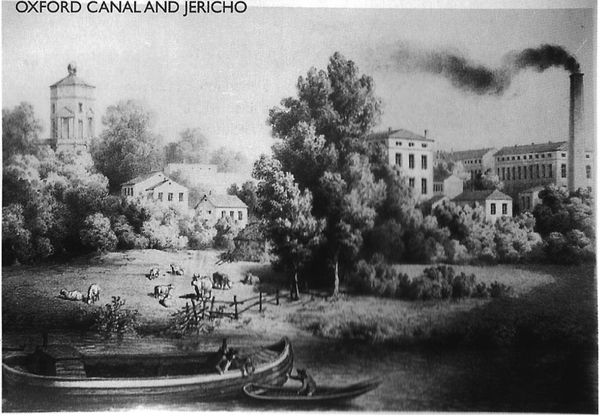Illustrating his talk with artists’ works, Mark Davies described the interaction between Thomas Combe and his wife, Martha, and the Pre-Raphaelites in Oxford. Having joined the Oxford University Press, Combe became its Superintendent. William Holman Hunt related that when Combe and his wife met artists John Millais and his friend Charles Allston Collins and heard of the poor food in their lodgings, Martha sent them a pie the next day.
The Pre-Raphaelite artists’ attention to detail was emphasised using the View of Port Meadow from Godstow Lock, which included the industrial buildings of Wolvercote Paper Mill and the Oxford University Press. For the painting, The Woodman’s Daughter, Millais requested Combe to ask the mother of the girl, Esther, for an old pair of her boots to be able to paint them with total accuracy. A Scene of the Oxford Canal included the Observatory and the OUP building, while Convent Thoughts may have been painted in the private garden of the Press where the Combes’ had their house. They had no children and bought many paintings.
William Holman Hunt chronicled the Pre-Raphaelite history and told how William Morris and his friend at Exeter College, Edward Burne Jones, recruited Dante Gabriel Rosetti to paint the Oxford Union with large murals. A rare sketch by Morris of his plan for a mural was shown. It was said, however, that “Topsy” (Morris ) “can’t draw the head or where the hips come of ‘stunner’ Lipscombe”, the daughter of the keeper of the Trout. John Ruskin was the most influential art critic and he helped the Pre-Raphaelites to become important.
In1854, the year Charles Dodgson finished his studies, he was ordained and he gave his first sermon at St. Barnabas Church which Combe had had built for the people of Jericho, and where he was Church Warden. Holman Hunt described Martha as “foster mother of the whole house”. Dodgson rowed Alice and her sisters to Godstow in 1862, and was asked by Alice to write the stories he told them. An attractive edition of “Alice’s Adventures Underground” was produced in 1864 with “A Christmas Gift” on the back cover. However Dodgson’s sketch of Alice was not deemed good enough by sculptor Thomas Woolner, and Tenniel, who rowed at Oxford came to be the illustrator. This year is the 150th anniversary of first publication of Alice in Wonderland.
(Summary prepared by Elizabeth Simons)

